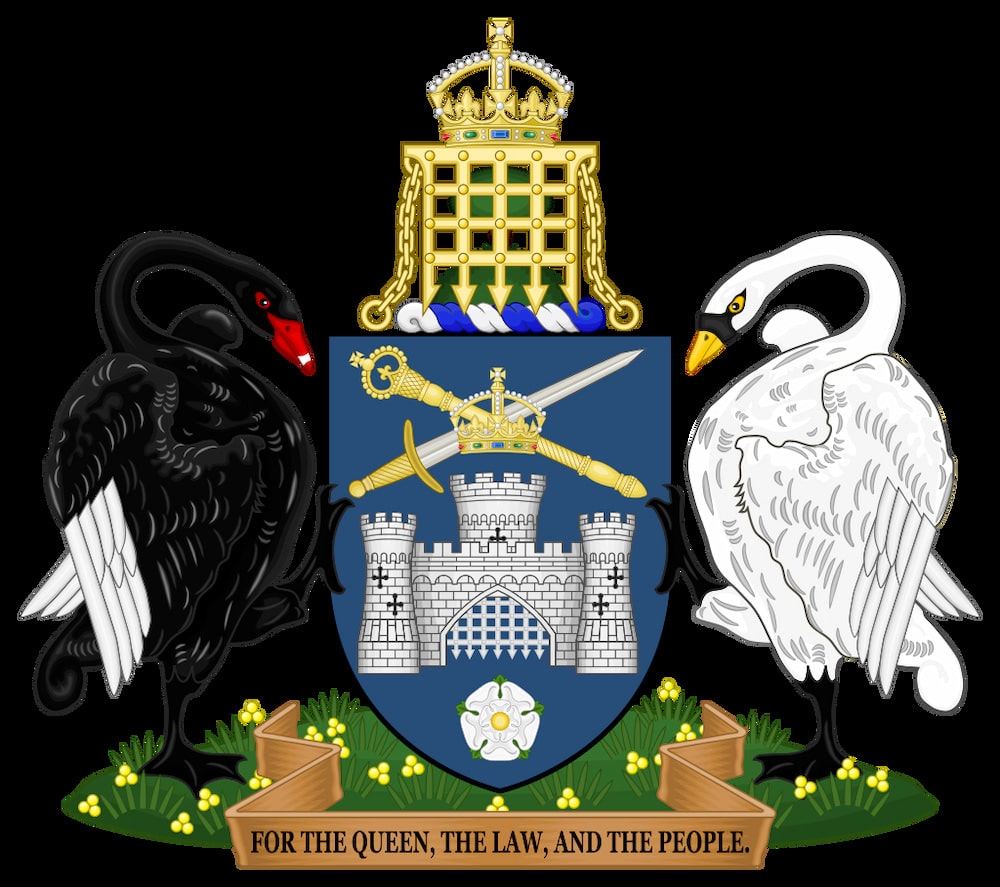Paul Girrawah House is a Ngambri custodian. He is the leader of the First Nations Party and a Candidate for Kurrajong at the October ACT Election.
The Coat of Arms of the City of Canberra, bestowed upon our city by King George V in 1928, holds significant historical and cultural value. It encapsulates the spirit and identity of Canberra, symbolised by the intricate heraldic elements and the distinct colours mandated by its original grant.
However, sustained practices by the ACT Government, particularly the frequent use of blue instead of the designated black for the Coat of Arms, raise serious concerns about the fidelity to this symbol’s intended representation.
The Coat of Arms features a triple-towered castle, a sword of justice, a Parliamentary Mace, and a rose of York. It is supported by a black swan and a white swan, symbolising both First Nations Australians and European settlers.

The use of black for the swan is particularly significant, representing the region’s Indigenous heritage. In our language, the black swan is called ‘ngiyaran’ or ‘dhundhu’, and it is a special totem for our people. More details about the importance of the black swan can be found on the Department of the Prime Minister and Cabinet’s website: https://www.pmc.gov.au/publications/australian-symbols-booklet/state-and-territory-symbols/symbols-australian-capital.
Yet, in various official documents, emblems, and promotional materials, the ACT Government has opted for a blue or other non-black colouration, especially on the ACT’s flag. This alteration not only deviates from the original design but also diminishes the symbolic meaning carried by the black swan. The black swan is more than just a colour; it represents the rich and enduring culture of the First Nations people and their ancestral connection to this land, a heritage that deserves our utmost respect and understanding.
This issue is not merely a matter of aesthetics. It is about respecting and preserving the integrity of our city’s heraldic identity. The black swan, flanking the shield, is a powerful emblem of the First Nations people, reflecting their role and recognition in the region’s history. Changing this to blue undermines this acknowledgment and the symbolism intended by the original grant.
The ongoing discussions about modernising the Coat of Arms and potentially developing a distinct symbol for the ACT reflect a broader desire for inclusivity and accurate representation of our contemporary community. This initiative, highlighted by the recent student designs showcased at the University of Canberra, aims to create a modern symbol that reflects the diverse identities within the ACT.
However, until a new coat of arms, which further embraces First Nations people, is officially adopted, it is imperative that we adhere to the original specifications of the existing one. This adherence is not just about maintaining tradition but about honouring the heritage and cultural significance embedded within these symbols. It is our duty to preserve and respect these symbols.
As a senior Ngambri custodian, I urge the ACT Government to respect the original design and colour scheme of Canberra’s Coat of Arms and revert any instance where it is displayed in blue or another colour; this could be done in an instant with a simple whole of Government directive from the Chief Minister. Let us preserve the black swan as a symbol of our Indigenous heritage and ensure that all representations of this emblem remain true to their historical and cultural roots.
My party will pursue a policy of creating a modern, respectful, and inclusive coat of arms for the ACT while ensuring that the City of Canberra’s coat of arms is displayed only in black, as intended.
ACT Government response
An ACT Government spokesperson replied: “The process for the Territory Coat of Arms remains underway, with the goal being a modern, inclusive and diverse design.
“This has included initial consultation with local Aboriginal and Torres Strait Islander community members through the Community Reference Group.
“Following the finalisation of the new Coat of Arms, a redesign of the ACT Flag will be considered.”



